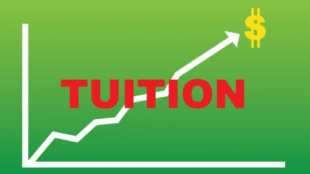Why Tuition Is Skyrocketing: An Inconvenient Truth
(Source) The costs of college tuition have perennially risen nationwide at rates higher than inflation, saddling millions of millennials and Generation Z’ers with exorbitant debts ranging from tens to hundreds of thousands of dollars. Vignettes about Generation X’ers paying student loans for decades are not uncommon and will likely continue for the younger generations. As if to mask the reality of the national student loan crisis, colleges and universities have downplayed the burdens they impose on students by pointing to lavish increases in financial aid. Yet seldom has such largess extended to all or even most students, at least not to the extent of paying for most of their education. America’s student-loan crisis demands analysis about the sources of burgeoning tuition costs and demands corresponding solutions. Universities often claim that tuition hikes are necessary to cover rising administrative, academic, and operational costs. The inconvenient truth behind redressing the student loan crisis, then, lies in chipping away at the bureaucratic leviathan that universities have created and reducing the number of nonacademic services universities provide students. For instance, Harvard boasts 22,273 students and over 18,000 total employees but only a comparatively meager 2,259 professors and instructors. Thus, whereas the Ivy League school [read more]



